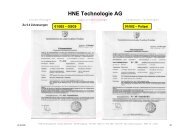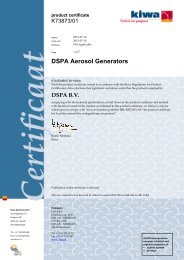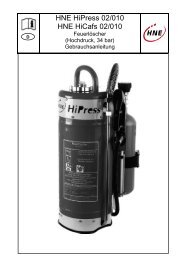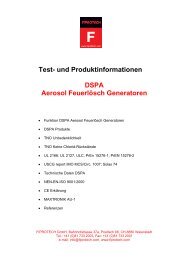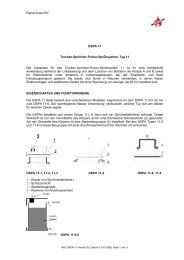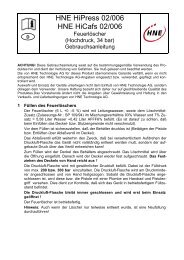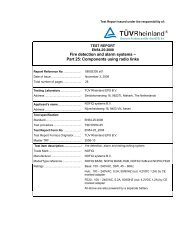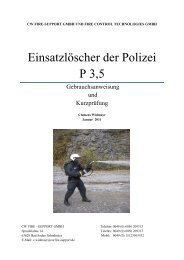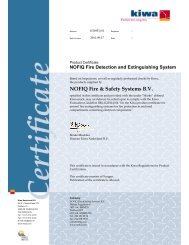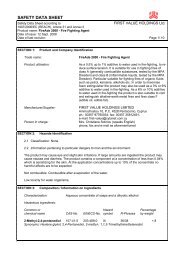FireAde 2000 Hydrocarbon suspension technology - Flame Guard
FireAde 2000 Hydrocarbon suspension technology - Flame Guard
FireAde 2000 Hydrocarbon suspension technology - Flame Guard
You also want an ePaper? Increase the reach of your titles
YUMPU automatically turns print PDFs into web optimized ePapers that Google loves.
The new <strong>technology</strong> for fighting fires, toxic vapours and contamination<br />
By admixing of 3% of <strong>FireAde</strong> <strong>2000</strong> heat is instantly being dissipated and the surface of combustible liquids is being separated by<br />
the <strong>FireAde</strong> <strong>2000</strong> molecules. After the dissipation of heat and the separation of the Hydro Carbon molecules a thick membrane and<br />
a tight structure (no large bubbles) foam blanket is built.<br />
<strong>FireAde</strong> <strong>2000</strong> interrupts the chain reaction of the<br />
free radicals by strongly reducing the collision with<br />
new thermal loads.<br />
The prevention of radical reactions by reducing the<br />
smoke was determined before, during and after the<br />
application of <strong>FireAde</strong> <strong>2000</strong>.<br />
On 4) Formation of a foam film<br />
Moreover, <strong>FireAde</strong> <strong>2000</strong> is designed to build a heavy<br />
or medium consistency foam. In case of heavy consistency<br />
foam one can choose between a hollow<br />
spray pipe or a heavy foam pipe. The crews can act<br />
more flexible with the hollow spray pipe. <strong>FireAde</strong><br />
<strong>2000</strong> develops a very stable and dense foam blanket<br />
which does not exceed 3 cm in height in case of<br />
heavy consistency foam.<br />
The foam blanket is floating on a thick membrane,<br />
which also separates the oxygene from the burning<br />
material and combustible vapours<br />
On 5) Separation of the Hydro Carbon molecules<br />
As soon as the <strong>FireAde</strong> <strong>2000</strong> / water mixture comes<br />
into contact with hydrocarbon molecules, a new<br />
chemical reaction takes place. This provides the<br />
Hydro Carbon molecular groups on the surface with<br />
a negative charge, causing them to repel each other.<br />
At the same time, they attract the positively charged<br />
water, so that they are separated from each other<br />
but surrounded by water, which they retain.<br />
9<br />
®




